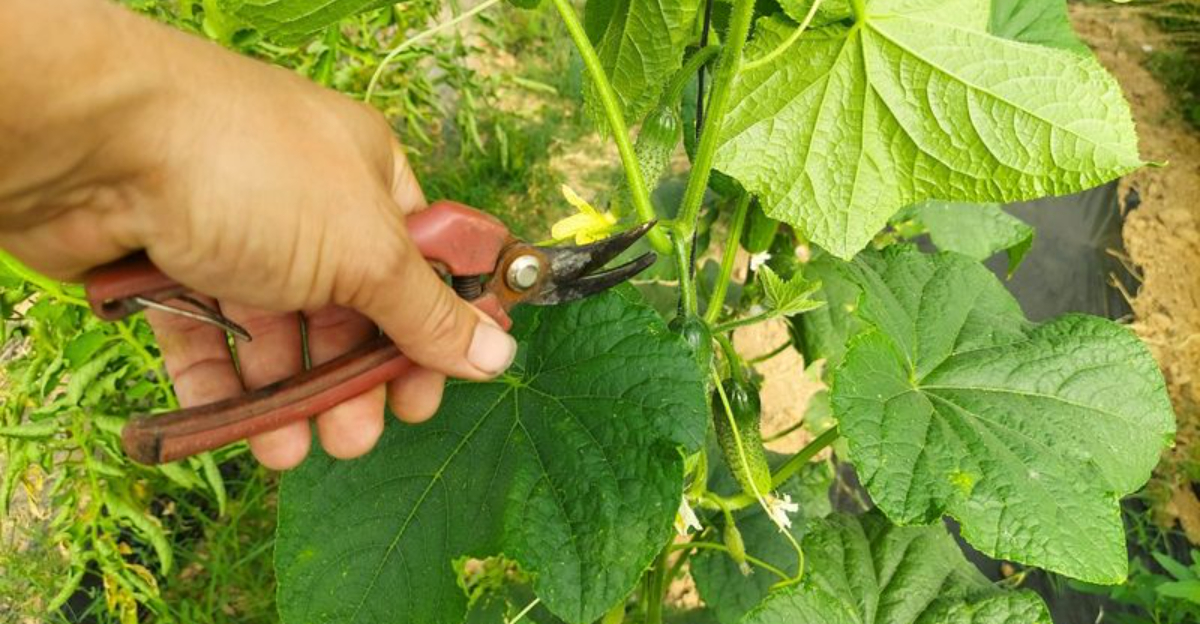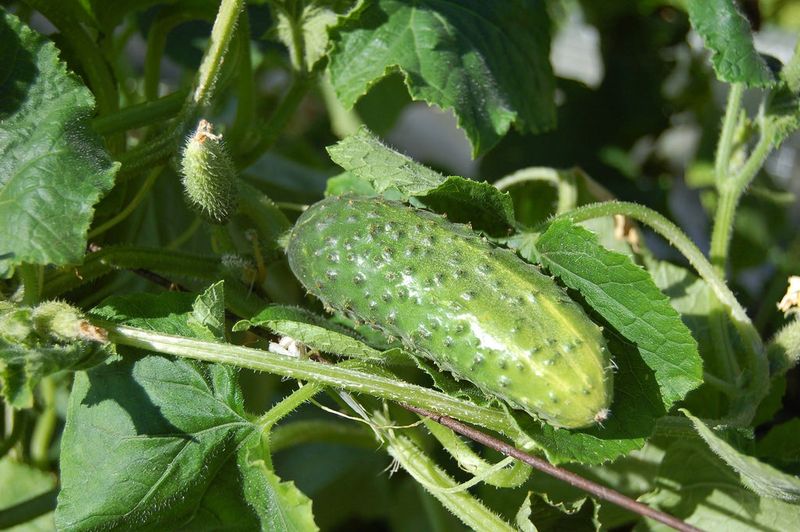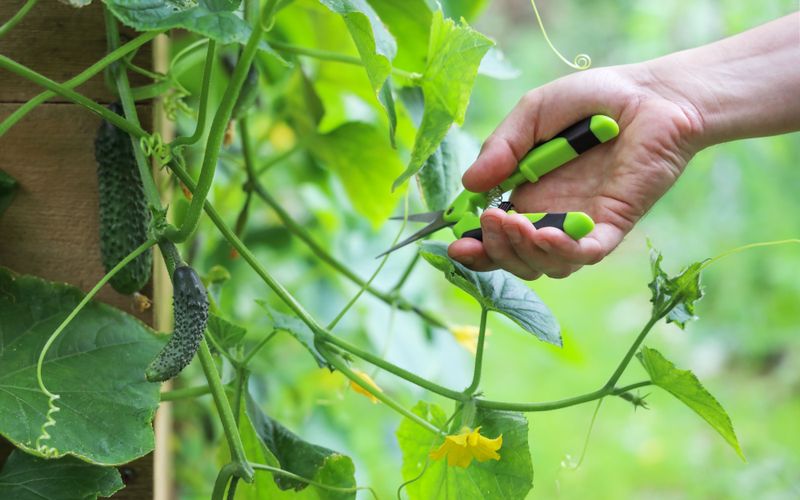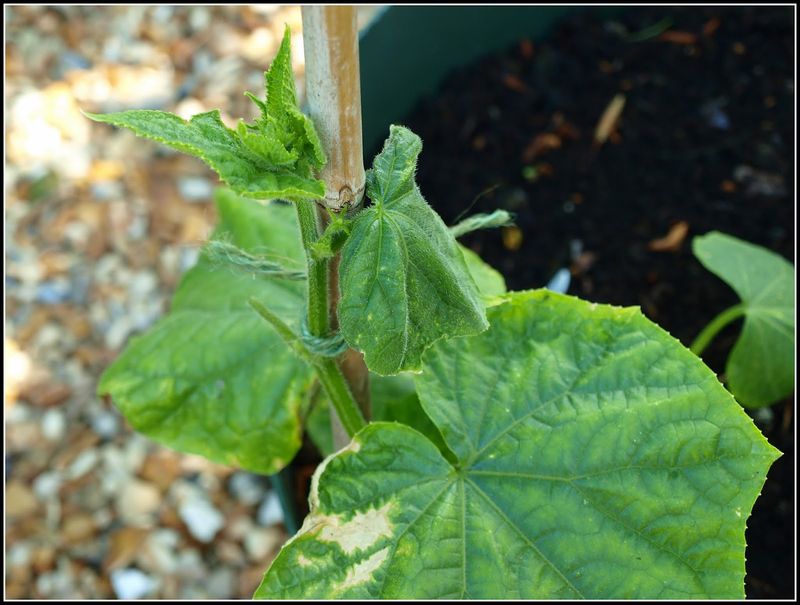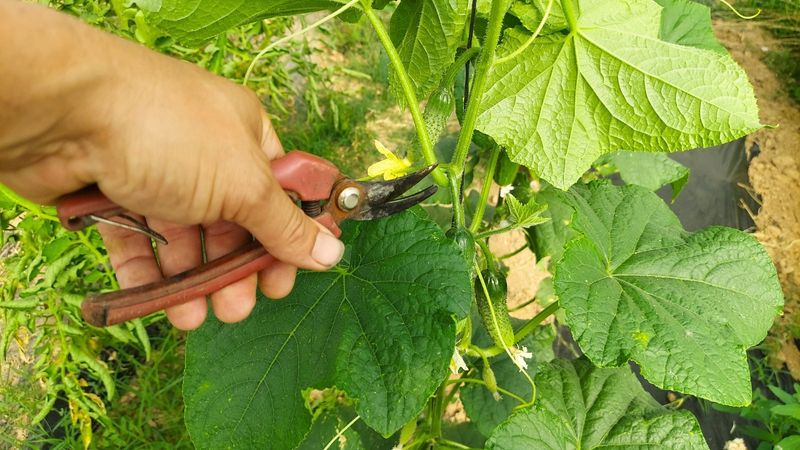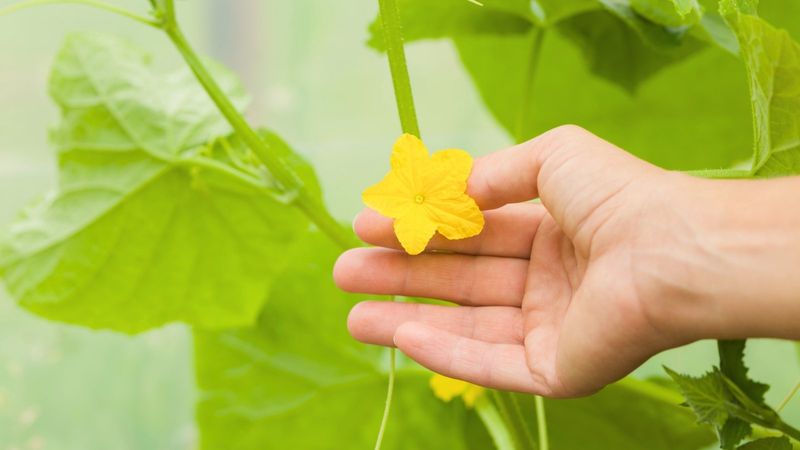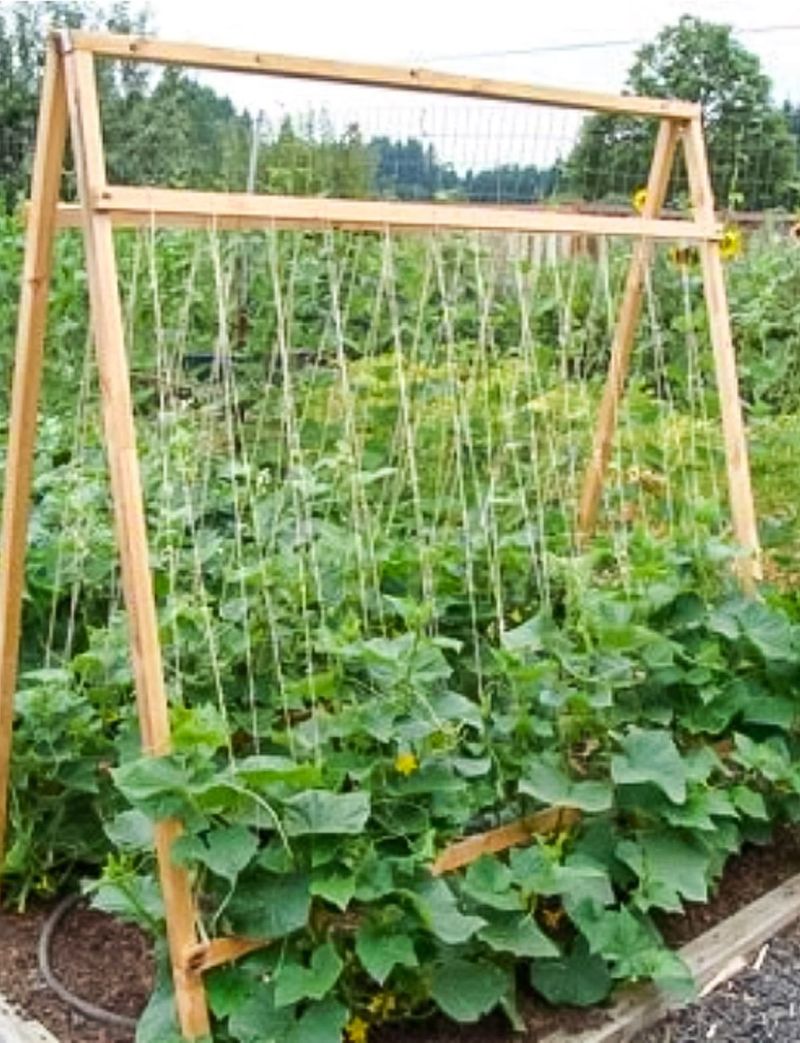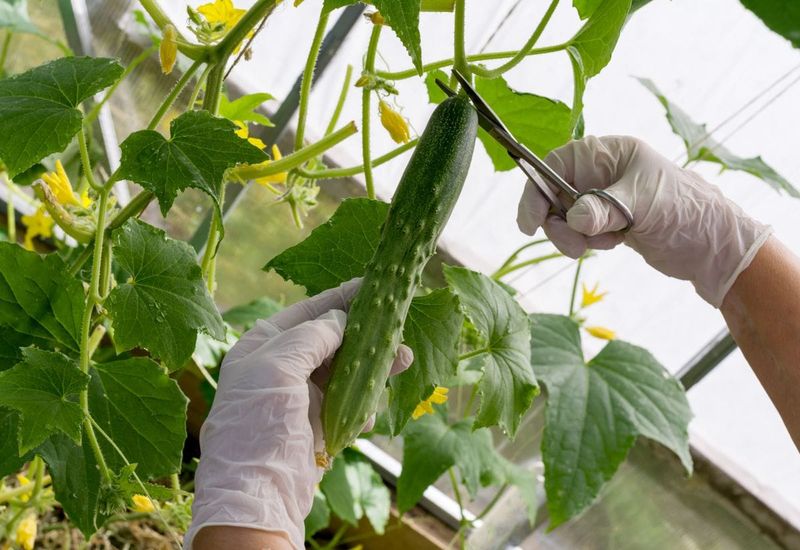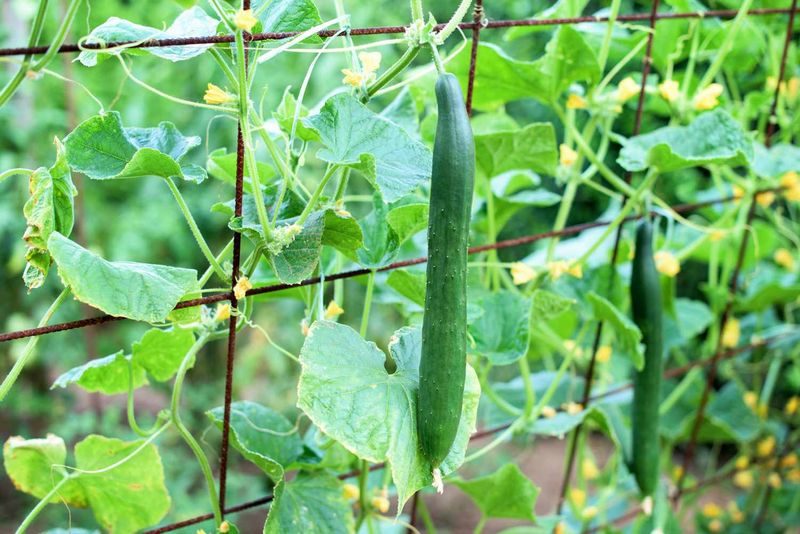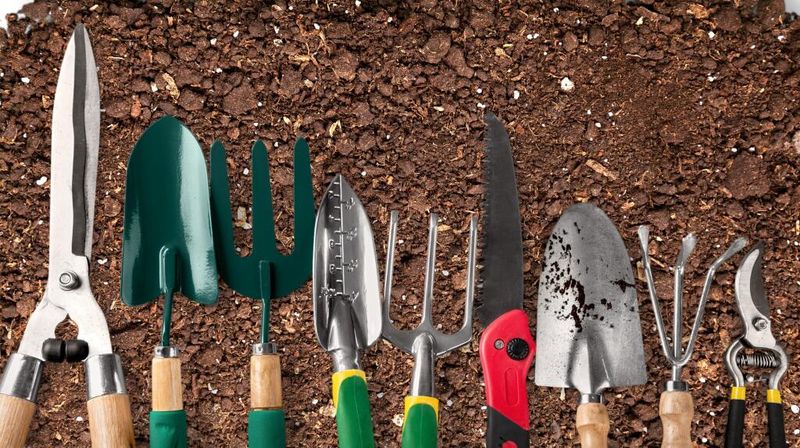Learn how to maximize your cucumber harvest with these 10 essential pruning tips.
Whether you’re a seasoned gardener or a beginner, these strategies will help you cultivate healthier plants and enjoy bountiful yields.
1. Know Your Cucumber Type
Understanding the type of cucumber you’re growing is crucial. Bush varieties require minimal pruning, allowing you to focus on other gardening tasks. In contrast, vining or indeterminate types thrive with regular pruning.
By trimming these types, you encourage better airflow and increased yields. Early identification helps you tailor your care, giving your plants the best chance to flourish.
Each variety has its unique growth pattern, and recognizing these differences ensures targeted attention. Embrace each plant’s natural tendencies, and watch as your garden rewards you. This simple knowledge acts as the foundation for successful cucumber cultivation.
2. Start Pruning Early
Timing is everything in gardening. Begin pruning when your cucumber plant has between three to five true leaves. This early start establishes a robust structure, setting the stage for healthy growth.
By shaping your plant early on, you control its development, guiding it towards strength and productivity. Young plants are more adaptable, responding well to initial pruning efforts.
This foundational work pays dividends as the season progresses. It’s not just about cutting; it’s about nurturing potential. These first steps pave the way for a thriving plant, ready to produce a mega harvest.
3. Remove Lower Leaves
Trimming the lower leaves of your cucumber plant is a strategic move. By removing foliage below the first set of flowers, you improve airflow around the base. This practice reduces the risk of disease, keeping your plant healthy and vigorous.
Air circulation is vital, and this simple act contributes significantly. Pruning also allows sunlight to reach the lower parts, boosting overall vitality. This method strengthens the plant’s core, leading to a more bountiful harvest.
Each snip is a step towards healthier growth, making your gardening efforts more rewarding and enjoyable.
4. Pinch Off Lateral Shoots
Lateral shoots can sap energy from your cucumber plant, so pinching them off is key. Allow only one or two main vines to grow, directing the plant’s energy towards fruitful growth. This selective pruning enhances yields, ensuring robust fruit production.
By managing lateral growth, you control the plant’s focus, leading to greater efficiency. Each pinch removes distractions, channeling vitality where it’s most needed. It’s a balance between nurturing and restraining, a dance that leads to a flourishing garden.
The result is more cucumbers, ready for harvest, and a plant that stands strong.
5. Cut Off Yellowing or Diseased Leaves
Healthy leaves are a sign of a thriving plant. When you spot yellowing or diseased leaves, it’s time to act. Removing these helps direct nutrients to vibrant growth areas, maintaining overall vitality.
This practice keeps the plant focused on producing healthy cucumbers. It’s an ongoing process, a vigilant watch for signs of distress. By cutting away the weak parts, you foster strength and resilience.
This act of care is both preventive and nurturing, safeguarding your garden’s future. The reward is a lush, productive plant, free from the burden of decay and disease.
6. Limit Early Flowers
The first flush of female flowers on your cucumber plant is tempting, but restraint is wise. By pinching them off, you allow the plant to grow stronger. This strategy encourages robust vine development before fruiting begins.
It’s a short-term sacrifice for long-term gain. Early flowers can divert energy away from essential growth, so limiting them ensures your plant matures fully. This patient approach fosters a more productive harvest later on.
Embrace the wait, and your patience will be rewarded with a stronger, more fruitful plant when it’s time to harvest.
7. Train the Vines Upward
Training your cucumber vines to grow upward offers multiple benefits. Using a trellis or cage, you create more space, improve airflow, and make harvesting easier. This vertical approach keeps the garden tidy and accessible.
By guiding the vines, you maximize sun exposure, essential for healthy growth. This method also reduces the risk of rot by keeping fruits off the ground. It’s an elegant solution, transforming your garden into a thriving, orderly space.
The upward journey of the vines mirrors their potential, reaching for the sky and producing a generous harvest.
8. Thin Out Dense Foliage
Dense foliage can be a barrier to light and air. By thinning it out, you ensure that hidden fruits receive the attention they need. This practice reduces the risk of mildew and allows the plant to breathe.
Each cut opens up pathways for sunlight, enhancing photosynthesis and growth. It’s about finding balance, making sure every part of the plant has its moment in the sun. This thoughtful approach leads to healthier plants and a more abundant harvest.
Your garden becomes a place of harmony, where each leaf and fruit has its place.
9. Maintain Weekly Pruning
Consistency in pruning is key to managing your cucumber plant’s growth. By revisiting your plants weekly, you prevent vines from tangling and becoming unproductive. Regular care ensures steady development and a thriving garden.
This routine not only boosts yields but also keeps the plant healthy and focused. Each session is an opportunity to connect with your garden, understanding its needs and responding accordingly.
It’s a partnership between gardener and plant, fostering growth through regular attention. The result is a continuous cycle of productivity and satisfaction, with each week bringing new rewards.
10. Use Clean, Sharp Tools
The tools you use in the garden matter. Always sterilize and sharpen them before and after use to prevent disease spread. Clean blades ensure precise cuts, protecting your plant’s health. This practice is a simple yet vital part of gardening care.
It’s about respect for your plants, ensuring they have the best chance to thrive. Each cut made with clean tools is a step towards a lush, productive garden. This attention to detail makes a difference, reflecting a gardener’s dedication and love for their work.
Your plants respond in kind, flourishing under your attentive care.
